Walkability

APA Poll Finds Millennials and Boomers 'Investing in Place'
During the American Planning Association's (APA) 2014 National Planning Conference in Atlanta, the APA announced findings from a national opinion survey that shows a clear interest in place-making among the concerns of Americans of all ages.
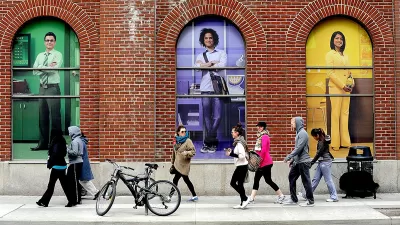
Study: Walking Increases Creativity
It's common knowledge that taking a walk can help get the creative juices flowing—but a new study by researchers at Santa Clara University claims to have proven it.

A Call to Flâner, for Spatial Justice
The concept of the flâneur was created in the 19th century in response to the encroaching speed and efficiency of the Industrial Age. Can the flâneur now fashion a political response to the Age of the Automobile?

More Thoughts On The Realtors' Survey
In addition to revealing public preferences for single-family homes and walkable communities, a recent survey conducted for the National Association of Realtors contains a variety of other small surprises.

America's Apartment Shortage: 8 Million Units
The 2014 National Realtor's Survey asked consumers for preferences in housing and neighborhood types. Although preferences trended toward the suburban, the number of people who want to live in urban areas is under-supplied by multi-family housing.
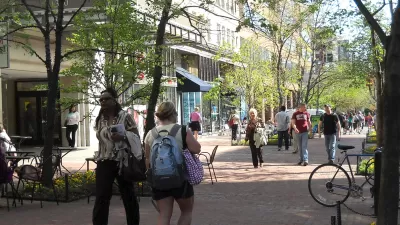
Realtors Discover Demand for Walkable Places
After generations of sales focused on conventional suburbia, realtors are discovering the demand for walkable, urban places.

Walkability and the Risk of Mortgage Default
A recent study strengthens the economic case for walkable communities, finding a strong inverse relationship between walkscore and risk of mortgage default.
What's Wrong With Walk Score's Food Desert Map
Walk Score’s new food desert map is a potentially powerful tool in the ongoing policy debate about access to healthy foods. But it’s still a work in progress.

How Easy is Walking to the Grocery Store in Your City?
Angie Schmitt shares news of an effort by WalkScore to rank cities based on the ability of residents to access grocery stores on foot. WalkScore invites planners all over country to use their data to improve walkable access to food in cities.

The Technology of Walkability
A recent article explores the promise—and potential pitfalls—of new technology to support the growing popularity of urban pedestrianism.

The Underlying Patterns of Urban Street Design
Based on empirical study, J. Alexander Maxwell and fellow University of Strathclyde researchers, in collaboration with Chuck Wolfe, argue for recalling historic patterns of pedestrian city settings in contemporary urban design and policies.
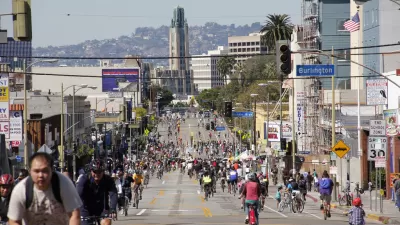
Can L.A.’s Streets Be Great? Deputy Mayor Rick Cole Opines
Los Angeles Deputy Mayor for Budget and Innovation Rick Cole shares his views on the critical ingredients necessary for the city to improve its thoroughfares at a Urban Land Institute-Los Angeles’ panel discussion titled "Can LA’s Streets Be Great?"
Dallas Warming Up to Complete Streets
A new Complete Streets Design Manual is under consideration in Dallas City Hall, but according to a recent article explaining Dallas' move toward walkable neighborhoods, the city has some work to do before the idea fully takes hold.
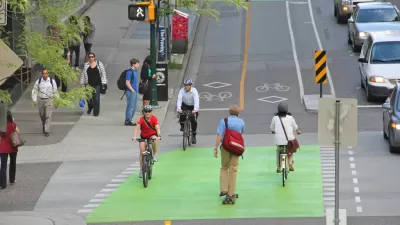
Economically Successful Cities Favor Space-Efficient Modes
Cities are, by definition, places where many people and activities locate close together. Their economic success and livability benefits from policies that favor space-efficient modes (walking, cycling, ridesharing and public transit).
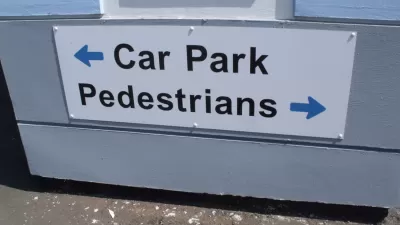
How Useful is Walkability: Are You Oriented to Walk?
The physical requirements for walkability—like narrow streets and wide sidewalks—aren't always enough to compel the activity of walking. How can we reorient toward the primal activity of walking?
Do Canada's Active, Outdoor Winters Breed Olympics Gold?
If you need a little misery-loves-company commiseration on winter, Hazel Borys shares some pics from Winnipeg, the coldest big city on earth. How this winter city deals with the polar vortex is something we may all need to get used to.
Researchers Link Density, Destinations to Active Transportation Habits
What, exactly, makes a neighborhood walkable? A new study published in the science journal PLOS-ONE begins to answer that question.
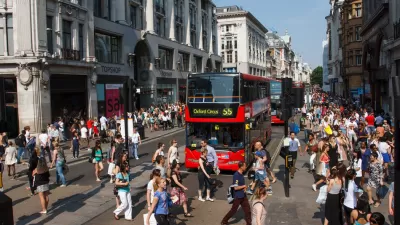
What Is 'Walkability,' Really?
Walkable developments are in demand, but what really makes a community "walkable"? It all boils down to three simple principles—physical access, proximity, and places—says John Lavey.
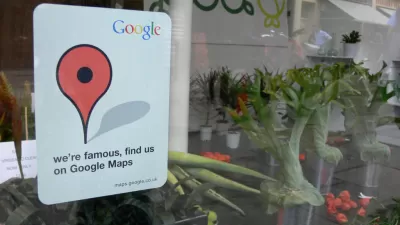
Location Optimization Tools: Toward More Comprehensive and Multi-Modal Indicators
New tools are becoming available to help people evaluate the quality of walking, cycling, public transit and automobile accessibility when making home location decisions. This information can help create more efficient and sustainable communities.
Sidewalk Survey is First Step Towards a More Walkable San Diego
Before San Diego can begin to fix its "busted sidewalks and busted sidewalk policies," the city is embarking on a high-tech $1 million effort to assess the quality of its pedestrian infrastructure.
Pagination
Urban Design for Planners 1: Software Tools
This six-course series explores essential urban design concepts using open source software and equips planners with the tools they need to participate fully in the urban design process.
Planning for Universal Design
Learn the tools for implementing Universal Design in planning regulations.
Clanton & Associates, Inc.
Jessamine County Fiscal Court
Institute for Housing and Urban Development Studies (IHS)
City of Grandview
Harvard GSD Executive Education
Toledo-Lucas County Plan Commissions
Salt Lake City
NYU Wagner Graduate School of Public Service


































